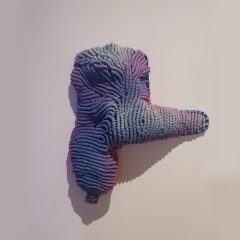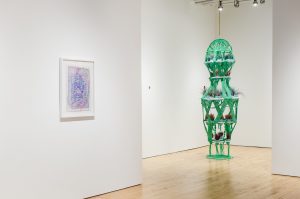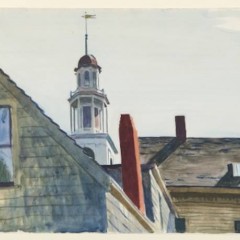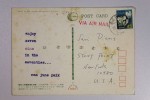
Take a look at James Castle’s retrospective at the Art Museum. Castle (1899-1977) was an outsider who spent his life on his family’s farms in Idaho. He used spit and soot and sticks to draw. He uses all sorts of common papers. Then, more interestingly, he recycled cardboard logo-smeared commercial packaging. He sews such cardboard into a flat sculpture which winningly evoke, say, a Marisol maquette.
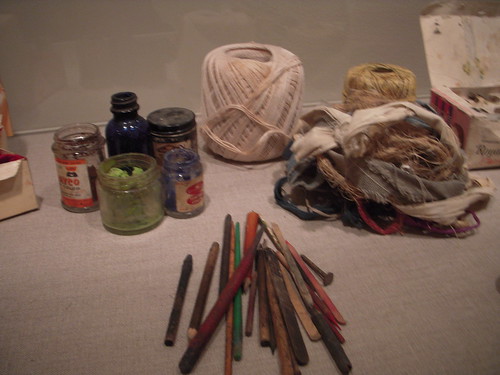
James Castle’s materials, string, rags, sticks…from the PMA show.
When I arrived at McGill in 1964, I rambled about Mount Royal, and happened on a cemetery where I found piles of discarded tombstones. They were of a uniform early twentieth century vintage with a French Canadian name, dates of birth and death, and the phrase sourd-muet. Deaf mute. Yikes! Political incorrectness through eternity? But the Archdiocese of Montreal had clearly repented this insensitivity. It was in 1964 deconsecrated rubble. I carted a stone home as a memento mori.
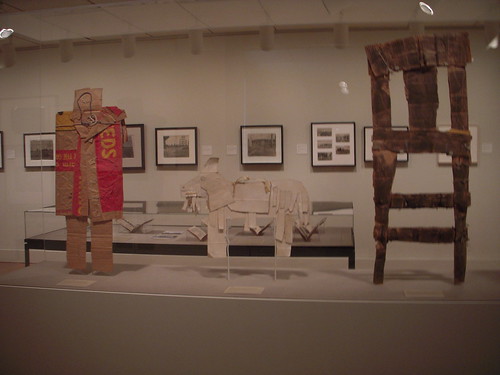
Some of James Castle’s sculptures.
My son’s mother is a sign-language interpreter. The Castle show is a hands-on favorite with Philadelphia’s disabled. Remember the pinball wizard who happened to be deaf, dumb and blind? Tommy? Castle focused. He saw more than most artists, although he heard nothing and spoke nary a word. He spent a few years at an Idaho school for the deaf but he soon rebelled. He never learned to sign. He was illiterate.

James Castle (left) drawing based on magazine ad
He was fascinated by man’s creation. He mastered perspective and loved alphabets. Of course, as well as a large loving Catholic family, he knew farm animals personally. He made charming sculptures of chickens, daffy ones of ducks, grand ones of geese. He explored metaphysical nooks with the simplest of means. As an adult, he re-drew a photo from his own childhood. It is his only self-portrait. There are a few slightly erotic collages. Did he improve his lot? Or merely ponder it all? I suspect he was a happy man.
—Michael Andre is a poet and art critic. Lately he has divided his time between New York and Philadelphia.


